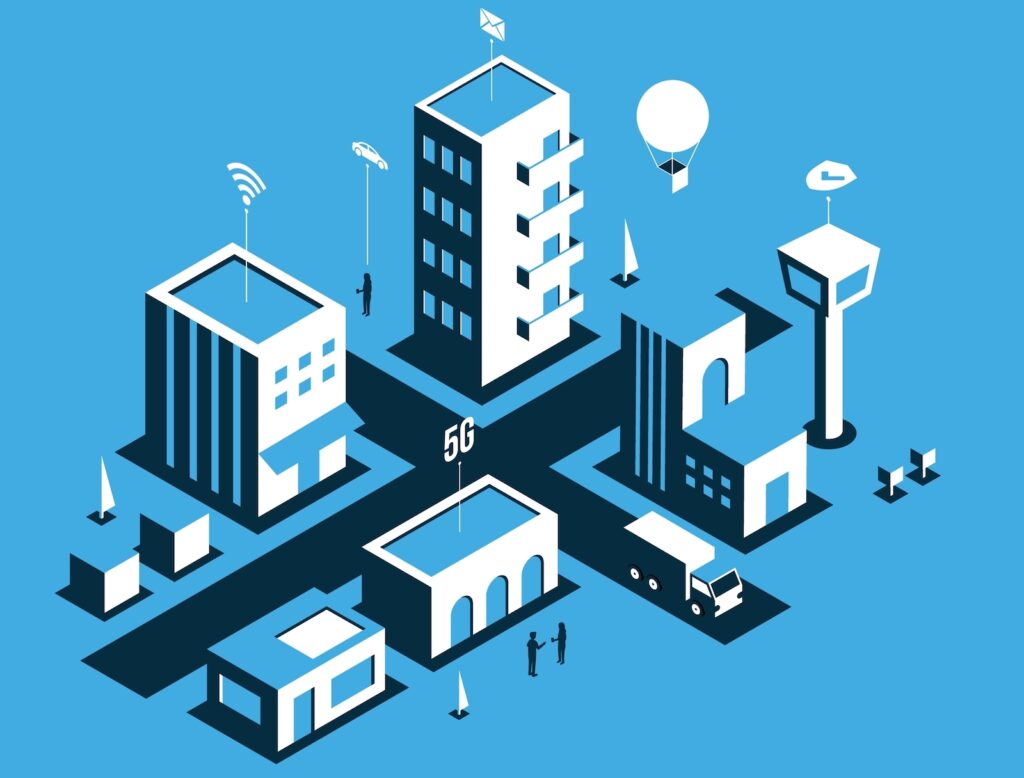Like many major technology trends today, the evolution of smart buildings is intrinsically linked to the evolution of connectivity technology. From wired to wireless, or 3 to 4 to 5G, or across the multitude of dedicated smart building communication protocols, the development of smart buildings has been shaped by the evolution of connectivity. However, as the smart buildings market grows into its immeasurable future potential market, we should also expect it to have an increasing influence on the evolution of the connectivity industry. The growing and varied demand from building occupants will increasingly influence the connectivity market, accelerating interest, investment, and innovation in smart building-focused connectivity.
“To keep pace with innovation, networks must be diverse and close to the technologies and people they support. As enterprises forge ahead with digital transformation efforts that drive hybrid work structures and look to take advantage of emerging technologies, evolved network architecture will be a key to success,” says Andres Irlando,President of Zayo Group. “Data computing, storage and network infrastructure need to be agile, flexible, and scalable, as well as cost-effective. Data lives on the edge in a cloud-first world, and the cloud is the core where collaboration happens. Companies that seamlessly connect edge-to-core, edge-to-cloud and edge-to-edge can thrive. Deploying tailored edge technology, adopting 5G networks, and cloudifying everything is table stakes now.”
Everything needs to talk to everything in the smart building and everything needs access to the cloud, making connectivity a clear differentiator in our projected future where most buildings may be smart. That doesn’t mean all buildings will be racing to connect every device to the latest wireless or cellular network, but rather the level of connectivity will be determined by how well a building combines a range of connectivity technologies for its unique needs. That varied connectivity ecosystem will have a direct impact on the performance of the building, in terms of cost-saving, carbon footprint, tenant satisfaction, productivity, security, and much more. Having the right connectivity mix for your building will be more important than having the latest or the most powerful connectivity technology.
“These [smart building] systems are embedded with a high degree of need for local networking using industry-standard protocols which will not be replaced with 5G anytime soon. However, systems for people tracking, asset tracking, and other user/tenant facing technology including security cameras will likely go the way of 5G due to the flexibility of the network,” Apurba Pradhan, VP of product marketing at Adesto (acquired by Dialog Semiconductor), told In-Building Tech. “These two realms of technologies will need to be connected, both on an operational level for controls applications, as well as a data level for AI/analytics applications.”

It is at the edge where we see wireless and cellular networks vying for a share of smart building connectivity. The flexibility of wireless communication makes it the obvious choice for a smart buildings industry striving for low-cost, easy installation solutions to drive adoption. 5G networks promise to take that flexibility to new heights with lower power requirements, lower latency, and significantly higher data transfer speeds than its predecessors, serving a growing range of edge connectivity needs. However, despite the significant hype around 5G technology, considerable doubt remains about its potential impact in buildings.
“5G was developed, in part, to address new opportunities across the IoT. However, interviews with industry stakeholders indicate strongly that 5G will have a limited medium-term impact on smart building IoT delivery, and short-range technologies continuing to dominate for internal building systems. Indeed, some felt that with the communications landscape already over-subscribed in terms of options that overlap in terms of functionality, the addition of 5G to the mix risked adding to customer confusion and implementation complexity,” explains our latest IoT research. “For the time being, 5G data is likely to be restricted to the entrance of the building or reserved for niche applications in smart buildings, such as AR or HD video streaming.”
Wired connectivity will continue to play a strong role in connecting the core operational infrastructure of smart buildings. Barring a huge increase in the reliability and cybersecurity of wireless communications, we should expect HVAC systems, elevators, escalators, and access control, as well as emergency infrastructure, to maintain wired connectivity for the medium to long-term. As the connectivity demands of buildings rise we are seeing a gradual replacement of copper and coaxial cabling with fiber optics-based networks using open-standard Ethernet/IP-based cabling. Fiber networks provide a significant bandwidth advantage over traditional networks but are more expensive, disruptive, and can be prone to breaking, and therefore not ideal for all building connectivity needs.
“Smart buildings are on their way to becoming fully digitized, not only catering for classical automation areas such as HVAC and lighting but also developing into demand-based agile living and working environments,” says John Corbett, sales director at EnOcean. “One single connectivity technology cannot meet all of these requirements. Hybrid infrastructures are the latest connectivity trend where smart buildings are developing into digitized environments. These combine media such as fiber or wired Ethernet to transport large amounts of data throughout a whole building or externally. WiFi for exchanging large amounts of data over local areas giving greater flexibility. At the sensor level, with dedicated low power wireless protocols to combine very low power consumption with the flexibility of wireless.”
With no single technology that meets all the varied communication needs of the smart building, a hybrid connectivity mix designed around the unique needs of each smart building may always be necessary. Depending on architectural elements, occupant trends, tenant objectives, and a range of other factors, buildings must find the connectivity infrastructure that makes sense for their current and expected future needs. As so often in the unpredictable smart building landscape, flexibility is key to optimizing operational performance dynamically and futureproofing against the unknown global crises, social trends, and technology disruptions that may await.



